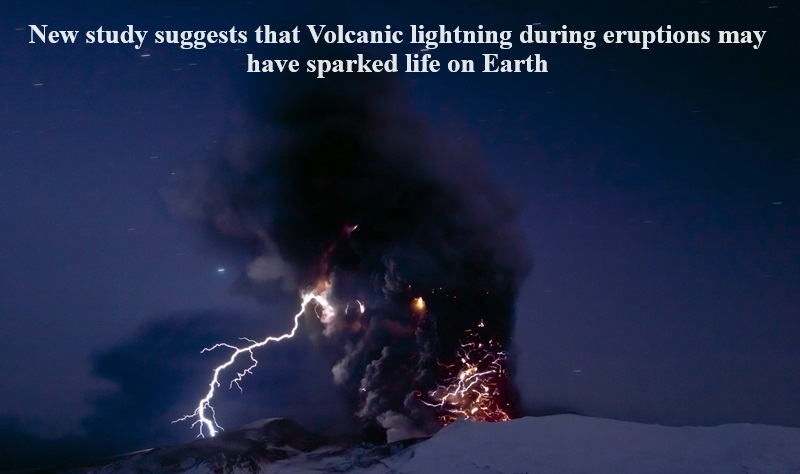
The examination of the genesis of life on Earth has long captivated the attention of scientists, yielding a plethora of theories and investigations. Amidst this diverse array of scientific inquiries, one consistent element emerges: the crucial role played by amino acids, the building blocks of proteins essential for all forms of life.
Initially, prevailing theories posited that these fundamental amino acids were delivered to Earth via atmospheric phenomena such as lightning and thunderstorms. However, a recent scholarly investigation introduces a novel perspective, suggesting that volcanic lightning also played a pivotal role in the formation of these life-sustaining protein components right here on Earth.
A collaborative effort involving geologists, scientists, and mineralogists has unearthed compelling evidence indicating that volcanic lightning may have catalyzed the conversion of atmospheric nitrogen into biologically useful forms, thereby facilitating the emergence of life on our planet. Notably, nitrogen constitutes a significant portion of the amino acids essential for protein synthesis, underscoring its pivotal role in the creation of life.
While atmospheric nitrogen is abundant, its inert nature precludes its direct utilization by plants, analogous to the assimilation of carbon dioxide. Instead, plants rely on a process known as nitrogen fixation, wherein molecular nitrogen is enzymatically converted into ammonia by specialized microorganisms like nitrogen-fixing bacteria and blue-green algae.
However, the absence of nitrogen-fixing bacteria during the early stages of life’s evolution poses a conundrum. As highlighted by Slimane Bekki of Sorbonne University in Paris, lightning from thunderstorms emerges as a plausible non-biological source of nitrogen fixation. This groundbreaking insight challenges conventional wisdom, suggesting that volcanic lightning may have served as a catalyst for the transformation of atmospheric nitrogen into biologically accessible forms, thus laying the foundation for the emergence of life on Earth.

Post Your Comments